解説 / Description
ブロキス・レオパルダスは、その名の通り豹(レパード)を彷彿とさせる美しい斑紋と、やや長く伸びた「セミロングノーズ」と呼ばれる吻(ふん)が特徴的な、南米原産の小型ナマズです。かつては長年「コリドラス属」の一員として親しまれてきましたが、2024年のゲノム解析に基づく分類学的な大改訂により、近縁種と共に「ブロキス属」へと移行されました。非常に温和な性格で、底床を「モフモフ」と餌を探す愛らしい姿から、多くの愛好家に親しまれています。市場では、外見が似た「コリドラス・ジュリー」や「コリドラス・トリリネアトゥス」と混同されることもありますが、吻の長さや頭部の模様で明確に区別することが可能です。 Brochis leopardus is a small catfish native to South America, characterized by its beautiful leopard-like spots and a “semi-long nose.” Although long classified as a member of the *Corydoras* genus, it was reclassified into the resurrected genus *Brochis* in 2024 based on comprehensive genomic analysis. Known for its extremely peaceful nature and endearing “mofumofu” (snuffling) foraging behavior on the substrate, it is a favorite among many aquarists. It is often confused in the market with the similar-looking *Corydoras julii* or *Corydoras trilineatus*, but it can be clearly distinguished by its snout length and head patterning.
基本情報 / Basic Information
| 学名 / Scientific Name | Brochis leopardus (Myers, 1933) ※旧学名 Corydoras leopardus |
|---|---|
| 通称 / Common Name | ロングノーズジュリー, レオパードコリィ, レオパードコリドラスLongnose Julie, Leopard Cory |
| 分類 / Family | ナマズ目 カリクティス科Order Siluriformes, Family Callichthyidae |
| 英名 / English Name | Leopard Cory, Leopard Catfish |
| 分布 / Distribution | ペルー、エクアドル(アマゾン川上流および西部流域)Peru, Ecuador (Upper and western Amazon River basin) |
| 最大体長 / Max Size | 約6cm(メスはオスよりわずかに大きくなる傾向があります)Approx. 6 cm (about 2.4 inches), with females tending to be slightly larger. |
| 寿命 / Lifespan | 約5年〜10年(適切な環境下では非常に長寿です)Approx. 5 to 10 years (Can be very long-lived under proper care). |
飼育環境 / Aquarium Environment
| 水槽サイズ / Tank Size | 最低60cm規格水槽(約57L)以上。群れで飼育するため、十分な底面積を確保することが望ましいです。Minimum 60cm standard tank (Approx. 57L / 15-30 US Gal). A sufficient bottom area is desirable for keeping them in groups. |
|---|---|
| 水温 / Temperature | 22℃〜26℃(高温には弱く、30℃を超えると危険なため、夏場の冷却対策を推奨します) |
| 水質 / Water Quality | 弱酸性〜中性(pH 6.0〜7.5)。軟水から中程度の硬水を好みます。水質の悪化には敏感なため、定期的な水換えが重要です。Slightly acidic to neutral (pH 6.0-7.5). Prefers soft to moderately hard water. Sensitive to poor water quality, so regular water changes are important. |
| レイアウト / Layout | 彼らの繊細な口ヒゲを守るため、粒が細かく角のない柔らかい砂(ボトムサンド、田砂など)を「必須」とします。流木や石、シェルターなどで安心して休める隠れ家を作り、前面には餌を探すためのオープンスペースを確保してください。Requires a soft sand substrate (e.g., cosmetic sand) to protect its delicate barbels—this is mandatory. Provide hiding spots (driftwood, rocks, shelters) and an open area in the front for foraging. |
| 注意点 / Precautions | 底床の選択が飼育の成否を分ける最も重要なポイントです。角のある砂利や大磯砂は、口ヒゲを物理的に損傷させ、そこから細菌感染症を引き起こすため「厳禁」です。また、驚くと水面から飛び出すことがあるため、水槽には隙間のない蓋を必ず設置してください。Substrate choice is the most critical point. Sharp gravel must be avoided as it damages barbels, leading to fatal infections. A tight-fitting lid is necessary as they may jump when startled. |
餌と給餌 / Feeding
| 餌の種類 / Diet | 雑食性。底棲魚用に開発された高品質な沈下性の人工飼料(コリドラス用タブレットなど)を主食とします。週に1〜2回、冷凍アカムシや冷凍ブラインシュリンプなどの動物性飼料を与えると健康維持や繁殖促進に効果的です。Omnivorous. A high-quality sinking pellet or tablet designed for bottom dwellers should be the staple diet. Supplement with frozen foods like bloodworms or brine shrimp 1-2 times a week for optimal health and breeding condition. |
|---|---|
| 給餌のポイント / Feeding Tips | 1日に1〜2回、数分で食べきれる量を与えます。彼らは薄明薄暮性のため、照明が落ちる夕方から夜にかけての時間帯に与えると活発に食べます。水槽の「お掃除役」として残り餌だけで飼育することは栄養失調の原因となるため、彼ら専用の餌を必ず底まで届けるようにしてください。食べ残しは水質を悪化させるため、速やかに取り除きましょう。Feed 1-2 times daily, preferably in the evening or after lights out, as they are crepuscular. They are not just a “clean-up crew” and require dedicated feeding; relying on leftovers leads to malnutrition. Remove any uneaten food promptly to maintain water quality. |
性格と混泳 / Temperament and Tank Mates
| 性格 / Temperament | 非常に温和で平和的な性格です。強い社会性を持ち、野生下では大規模な群れを形成します。単独飼育では臆病になり本来の活発さを失うため、最低でも5〜6匹以上、できればそれ以上の群れで飼育することが強く推奨されます。Extremely peaceful and social. They form large shoals in the wild and must be kept in groups of at least 5-6 individuals (more is better) to feel secure and exhibit natural behavior. Solitary individuals become shy and stressed. |
|---|---|
| 混泳の相性 / Compatibility | ネオンテトラ、ラミーノーズテトラなどの小型カラシン、ラスボラ類、オトシンクルス、温和な小型グラミーなど、遊泳層が異なり攻撃性のない魚種が最高のパートナーです。大型魚や攻撃的な魚、縄張り意識の強い底棲魚(一部のローチやシクリッド)との混泳は絶対に避けてください。また、餌の競争に負ける可能性があるため、アエネウス(赤コリ)のような非常に活発な種との混泳も注意が必要です。Excellent for community tanks with small, peaceful, upper-dwelling fish like Neon Tetras, Rummynose Tetras, Rasboras, and Otocinclus. Avoid large, aggressive fish or territorial bottom dwellers (like some loaches or cichlids). Be cautious with overly active species (like *Osteogaster aeneus*) that may outcompete them for food. |
病気と対策 / Diseases and Prevention
| かかりやすい病気 / Common Diseases | 最も注意すべきは、不適切な底床(砂利など)による口ヒゲの損傷と、そこから発症する細菌感染症です。その他、水質の悪化が引き金となる尾ぐされ病、水カビ病、カラムナリス病、白点病などが報告されます。The most common and serious issue is bacterial infection resulting from barbel damage caused by improper substrate (gravel). Other common ailments related to poor water quality include fin rot, fungus (Saprolegnia), Columnaris, and Ich (White Spot Disease). |
|---|---|
| 対策と予防 / Prevention | 口ヒゲを守るために「必ず柔らかい砂の底床を使用する」ことが、最大の予防策です。また、週に一度1/4程度の定期的な水換えを行い、清浄な水質を維持することが病気の発生を抑えます。ナマズの仲間は魚病薬に敏感な場合があるため、薬浴は規定量の7〜8割程度の薄めの濃度から慎重に開始してください。Using a soft sand substrate is the single best prevention. Maintaining pristine water quality through regular (e.g., 25% weekly) water changes is also crucial. Catfish can be sensitive to medications, so start treatment (e.g., salt baths or chemical treatments) at 70-80% of the recommended dosage and observe carefully. |
増やし方(繁殖) / Breeding
| 繁殖形態 / Reproduction | 水槽のガラス面やアマゾンソードのような葉の広い水草の表面に、粘着質の卵を産み付けます。オスがメスを追尾し、精子を受け渡す「Tポジション」と呼ばれる特徴的な繁殖行動をとります。Adhesive egg-layer. They perform a characteristic “T-position” behavior and lay sticky eggs on aquarium glass, plant leaves (like Amazon Swords), or other smooth surfaces. |
|---|---|
| 繁殖のポイント / Breeding Tips | まず、オス多めの群れ(オス2:メス1など)を、冷凍アカムシなどの栄養価の高い餌で十分にコンディショニングします。その後、雨季の到来を模倣し、水温が2〜3℃低い新鮮な水で50〜80%の大規模な水換えを行うと、産卵が誘発されることがあります。卵は親が食べてしまうため、速やかに隔離し、別の容器(サテライトなど)で弱いエアレーションをかけ、メチレンブルー水溶液などでカビを予防します。孵化した稚魚には、ヨークサックが吸収された後、孵化したてのブラインシュリンプを与えるのが最も効果的です。Condition a group (ideally with more males than females) with protein-rich foods (e.g., frozen bloodworms). Trigger spawning by performing a large water change (50-80%) with cooler water (2-3°C / 4-6°F lower) to simulate the rainy season. Eggs must be removed to a separate rearing container (like a breeder box) to prevent parents from eating them. Use gentle aeration and an anti-fungal treatment (e.g., Methylene Blue). Feed the fry newly hatched brine shrimp once their yolk sacs are absorbed. |
雑学と豆知識 / Trivia and Fun Facts
| 雑学・豆知識 / Trivia & Fun Facts | 1. 分類の歴史: 本種は長年「コリドラス属」でしたが、2024年のDias氏らによるゲノム解析研究に基づき、近縁のセミロングノーズ種と共に、一度失効していた「ブロキス属」へと再分類されました。アクアリウムの世界ではまだ旧名の「コリドラス・レオパルダス」が広く使われています。 2. 近縁種との識別: 市場で「ジュリー」として販売されている個体のほとんどは、実際には「コリドラス・トリリネアトゥス」です。本種(レオパルダス)は、これら2種と比べて明らかに吻が長い(セミロングノーズ)点、そして頭部の模様が細かいスポット状(トリリネアトゥスは網目状)である点で明確に区別できます。「ロングノーズジュリー」という通称は、この特徴をよく捉えています。 3. 特殊能力「腸呼吸」: カリクティス科の仲間は、水中の溶存酸素が不足すると、水面にダッシュして空気を吸い込む「腸呼吸」という特殊能力を持っています。時折見られる行動ですが、あまりに頻繁な場合は酸素不足や水質悪化のサインかもしれません。1. Taxonomic History: This species was long known as *Corydoras leopardus*. However, based on a 2024 genomic study by Dias et al., it was reclassified into the resurrected genus *Brochis*, along with other related semi-longnose species. The old name is still widely used in the hobby. 2. Identification: Most fish sold as “Julii” in the trade are actually *Corydoras trilineatus*. *B. leopardus* is clearly distinguished from both species by its significantly longer snout (semi-long nose) and its spotted head pattern (whereas *C. trilineatus* has a reticulated or maze-like pattern). 3. Special Ability “Intestinal Respiration”: Like other Callichthyidae, they possess the ability to breathe air. If dissolved oxygen levels in the water are low, they will dash to the surface to gulp air, which is then absorbed by their intestines. While normal behavior, frequent gulping may signal low oxygen or poor water quality. |
|---|
まとめ / Conclusion
ブロキス・レオパルダスは、豹柄の模様と優雅なセミロングノーズが魅力的な、非常に温和な底棲ナマズです。2024年の分類変更により、長年親しんだコリドラス属からブロキス属へと新たな居場所を与えられました。 Brochis leopardus is a very peaceful bottom-dwelling catfish, attractive for its leopard pattern and elegant semi-long snout. The 2024 taxonomic revision has given it a new home in the genus *Brochis*, moving it from the long-familiar *Corydoras*.
彼らの飼育を成功させる最大の鍵は、①繊細な口ヒゲを守るための「柔らかい砂の底床」、②清浄な水質を維持する「定期的なメンテナンス」、そして③彼らの社会性を満たす「群れでの飼育」の3点に尽きます。単なる「お掃除役」ではなく、専用の餌と配慮が必要ですが、それに応えてくれるだけの愛らしさと奥深さを持った、素晴らしいアクアリウムのパートナーとなってくれるでしょう。 The keys to successfully keeping them are: 1) using a soft sand substrate to protect their delicate barbels, 2) performing regular maintenance for clean water, and 3) keeping them in a group to satisfy their social needs. They are not mere “clean-up crew” and require dedicated feeding and consideration, but they will reward you as a delightful and fascinating aquarium partner.
▶ 記事の生体をAMAZONで買う ▶ 記事の生体をYahooで買う

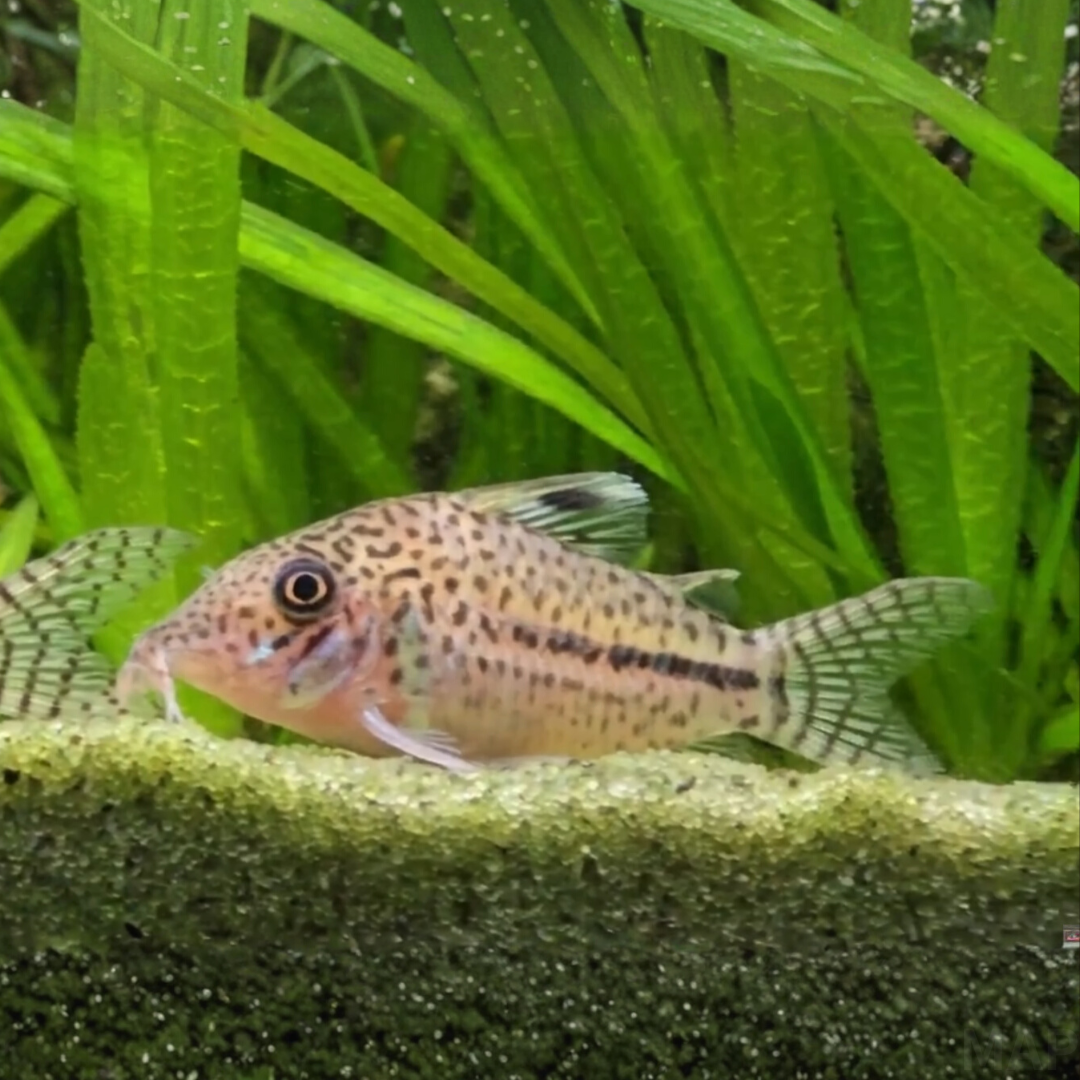




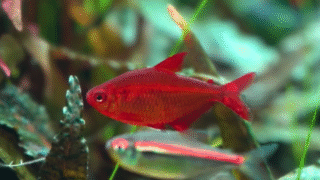
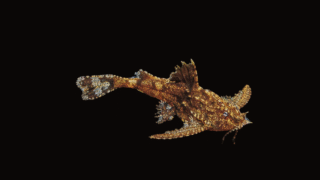
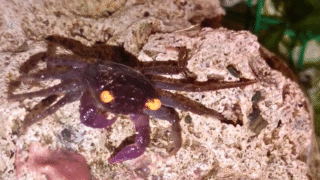
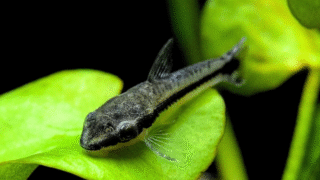
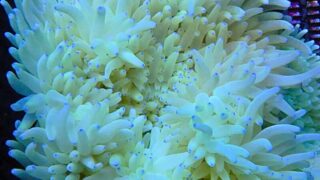
コメント